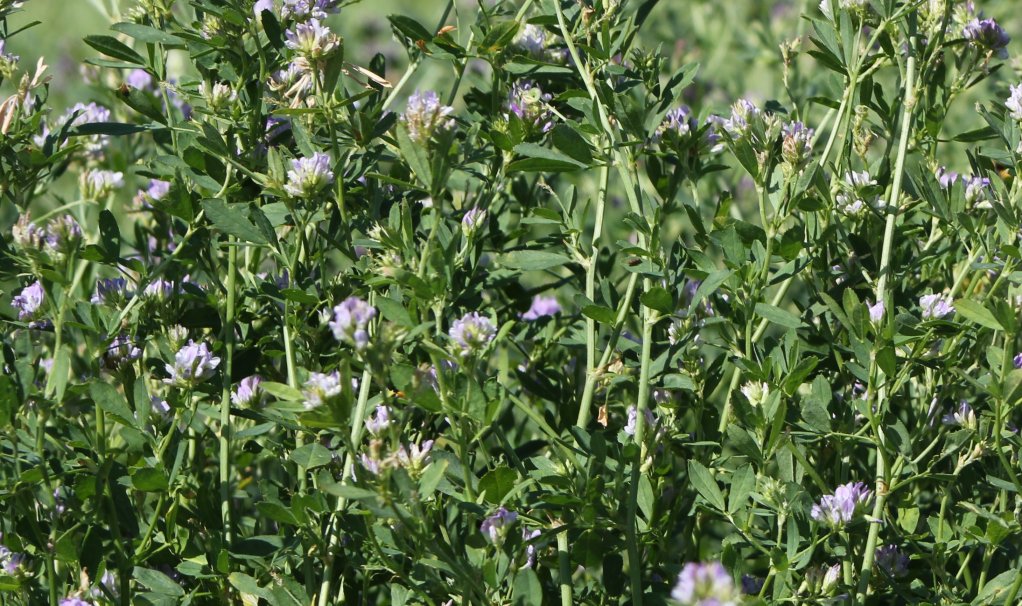
By Bruce Anderson, UNL Forage Specialist
Late summer rains and moderate temperatures have produced higher than usual fall alfalfa yields. Quite a bit has been harvested this October. Storage can be risky, though.
Hay cut in October tends to be rich with very high quality. It’s not unusual to have hay with lab tests that show more than 25% crude protein and over 200 relative feed value. The fine-stemmed hay packs really tight into nice, heavy bales.
October hay also is hard to dry, however. To get it off the field, many times it gets baled just a little too damp, especially for the extra tight, heavy bales it makes.
While high forage quality is great for feeding livestock, it also provides plentiful nutrients for fungi and bacteria in the hay. Plentiful nutrients in a tight, dense package that is a little too wet can be a recipe for disaster.
Mold, of course, can be a problem with this type of hay. A more dangerous risk, though, may be the threat of hay fires from spontaneous combustion. As microbes feed on nutrients in the hay, they produce heat. In a tight, dense bale it is difficult for this heat to dissipate into the air. The hay gets hotter and hotter, and eventually can start to burn.
The fire risk is magnified when hay is stored indoors or stacked because the heat has to travel farther before being released in the air. Wait a couple weeks after baling for heat and moisture to evaporate, sometimes called going through its sweat, before moving this kind of hay into a large pile.
If you are worried about your stacked hay, drive a steel pipe into your haystack. If it gets too hot to handle in 30 minutes, prepare to pull out bales in hopes of eliminating or reducing fire damage.
Better yet is to put a thermometer down a hollow pipe or use an infrared thermometer to measure temperature directly. Above 140 degrees the hay is at a high risk of burning and the hay should be moved. At 160 degrees, hay might actually combust as it’s moved and exposed to additional oxygen. Don’t move the hay until adequate equipment and water is present to combat a fire if it does ignite. And above 180 degrees the hay is very likely to burn.
Monitor your October hay. If you catch it early enough you might prevent your hay stacks or barns from burning.